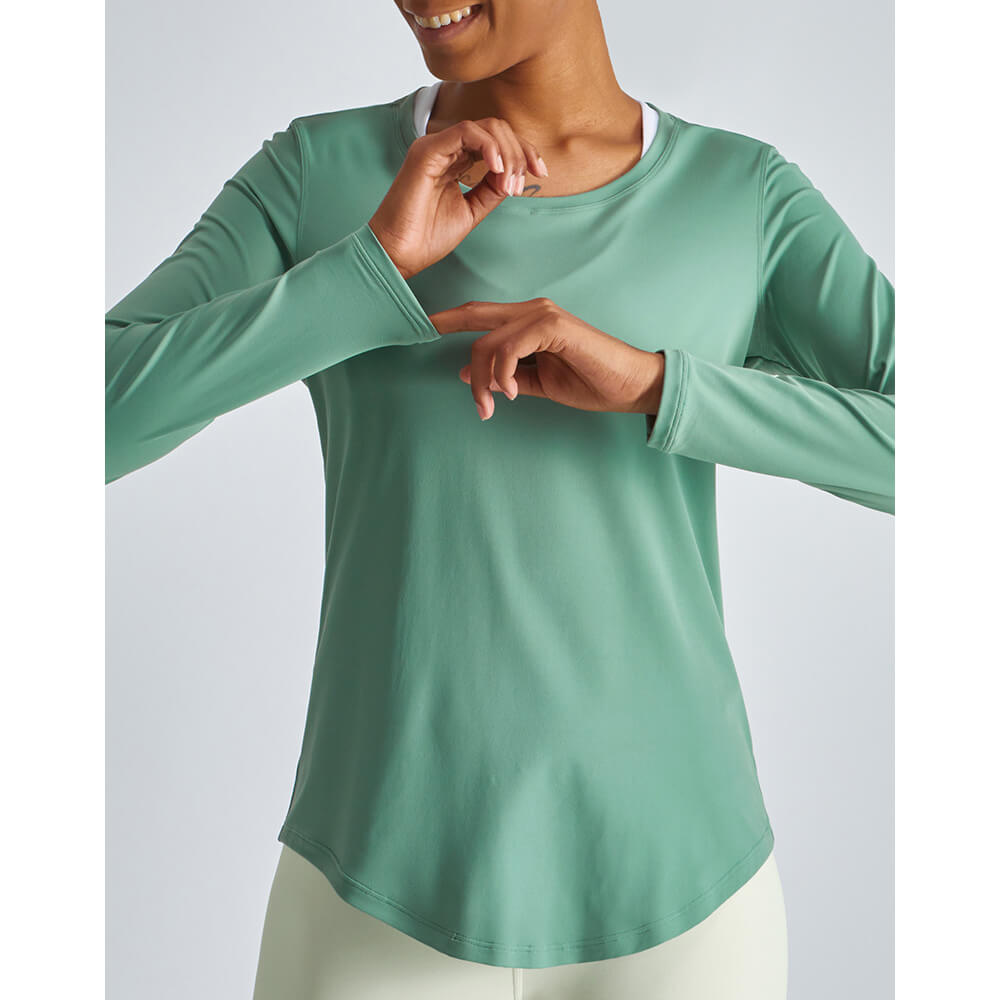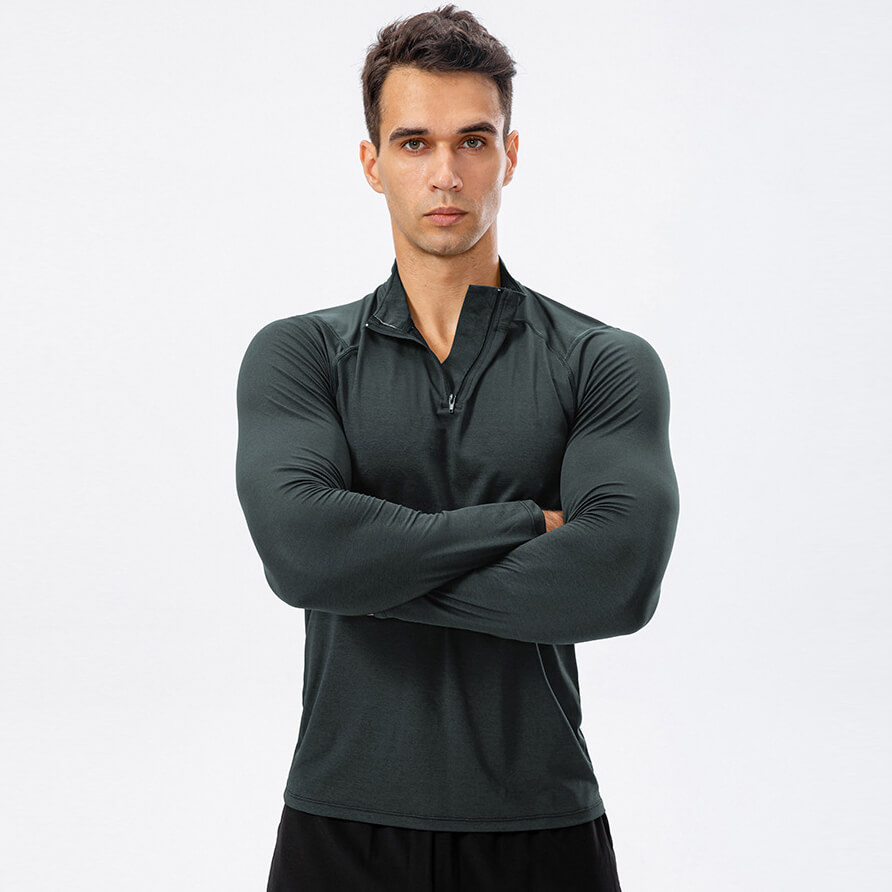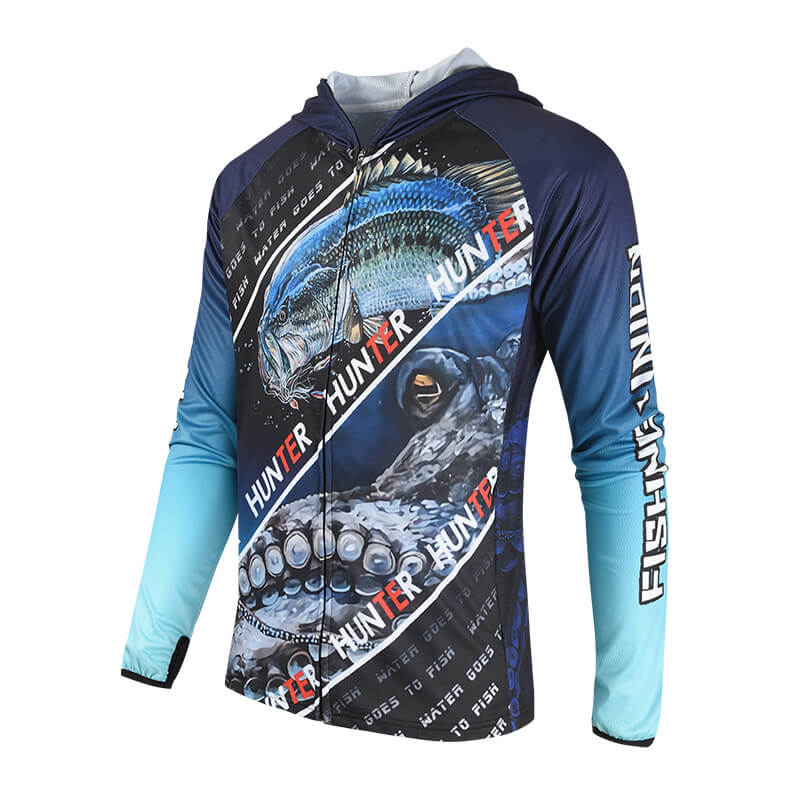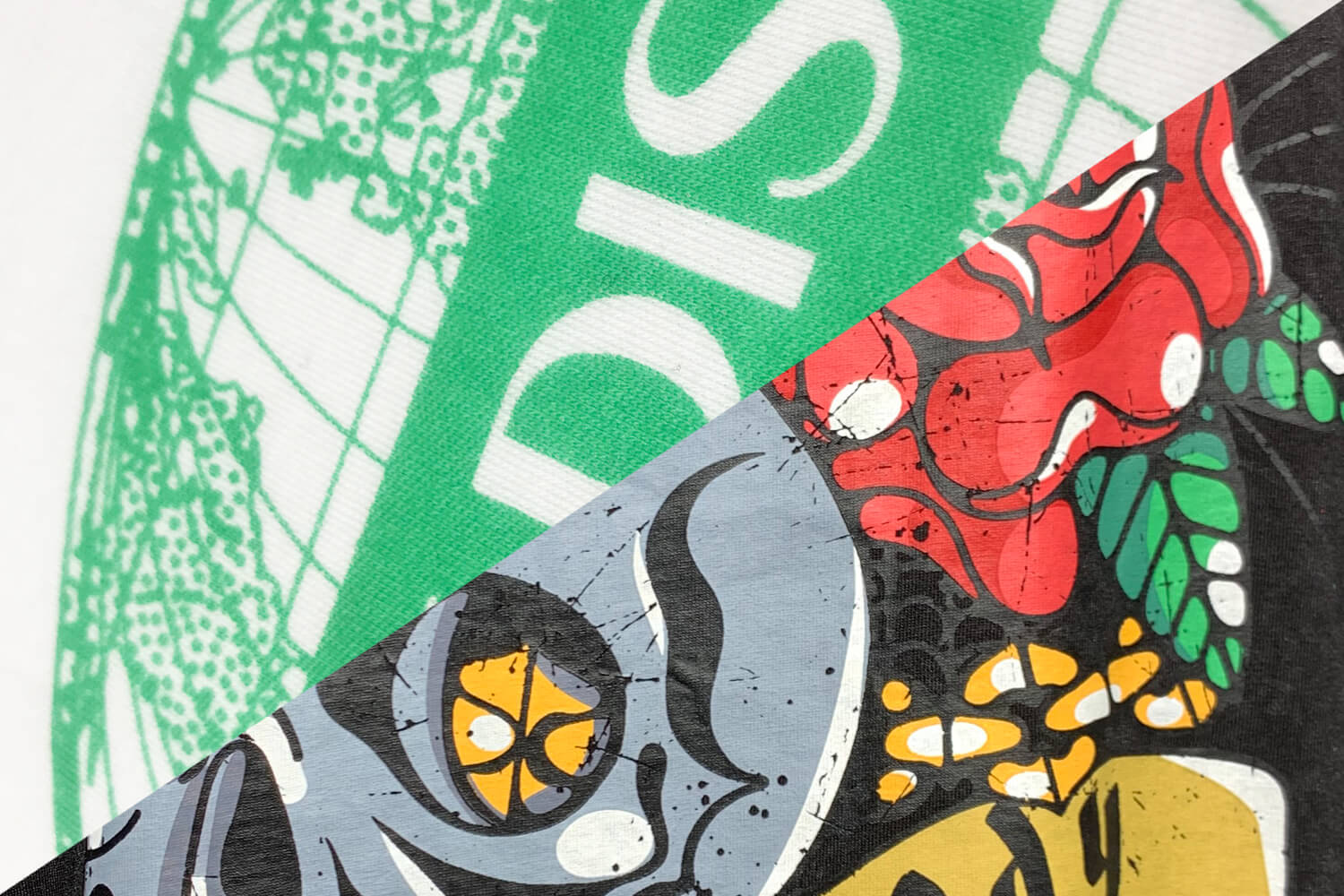If you’re planning to make a fishing shirt, choosing the right fabric is crucial to ensure your comfort and functionality while on the water. A good fishing shirt should protect you from the sun, keep you comfortable, and allow you to move freely.
4 of the best fabrics for making the fishing shirt
Nylon & polyester
Nylon and polyester are the best option for making fishing shirts, they are quite similar fabrics but each of them has its own sparkle. Let’s take a closer look:
- Quick-Drying: Both nylon and polyester fabrics excel in quick-drying capabilities. They wick moisture away from your skin, allowing it to evaporate quickly. This feature is great for staying comfortable during fishing trips, especially if you get wet or encounter rainy conditions.
- Durability: Nylon fabric is known for its exceptional strength and durability. It can withstand rough handling, abrasions, and snags without tearing easily. Polyester fabric is also quite durable and resistant to wear and tear. Both fabrics can handle the demands of fishing, but nylon is often considered slightly more durable.
- Breathability: Polyester fabric generally has better breathability than nylon. It allows for good airflow, keeping you cool and preventing excessive sweating. However, some nylon fabrics incorporate mesh panels or ventilation features to enhance breathability, so it’s not necessarily a deal-breaker for nylon.
- Lightweight: Both nylon and polyester fabrics are lightweight, which is beneficial for freedom of movement and overall comfort during fishing. You won’t feel weighed down by heavy fabric, allowing you to cast, reel, and maneuver with ease.
- UV Protection: Both nylon and polyester fabrics can provide good UV protection, shielding your skin from harmful sun rays. However, the level of UV protection can vary depending on the specific fabric and any additional treatments applied.

The choice between nylon and polyester fabric for a fishing shirt often comes down to personal preference and priorities. If durability and tear resistance are your top concerns, nylon may be the better choice. If breathability and moisture-wicking properties are more important to you, polyester could be a favorable option. Consider the specific features of each fabric and how they align with your fishing needs and preferences. Whichever fabric you choose, make sure it offers the desired comfort, quick-drying capabilities, and protection for your fishing adventures.
Sustainable fabric options
Polyester and nylon have always occupied an important position in fishing clothing and cannot be shaken. But is there a fabric that is both suitable for outdoor sports and sustainable? Absolutely YES!
- Recycled Polyester: Recycled polyester is made from post-consumer plastic bottles or recycled polyester fabric waste. Using recycled materials, it helps reduce the consumption of new resources and diverts plastic waste from landfills. Recycled polyester can offer the same moisture-wicking and quick-drying properties as polyester does, making it suitable for fishing shirts.
- Another notable is bamboo. Bamboo fabric is a sustainable superstar! It’s ultra-comfortable, moisture-wicking, odor-resistant, sun-protective, breathable, and hypoallergenic. It’s the perfect choice for a fishing shirt that keeps you feeling fresh and comfortable while being kind to the environment. Go bamboo and enjoy the ultimate fishing experience!
Tips: Bamboo fabric will dry a bit more slowly than nylon and polyester and it is not as durable as them.
What are the must-have features of the fishing shirt?
When choosing a fishing shirt, there are several must-have features that can enhance your fishing experience. These features include:
- Moisture-Wicking: Opt for a fishing shirt that has moisture-wicking properties. This means it can pull moisture away from your skin and quickly evaporate it, keeping you dry and comfortable even in hot and humid conditions.
- Quick-Drying: Look for a shirt that dries quickly. If you get wet while fishing or encounter rain, a quick-drying shirt will ensure that you don’t stay damp for too long, helping you stay comfortable and avoid the risk of hypothermia in colder conditions.
- Breathability and Ventilation: Choose a shirt that offers good breathability and ventilation. This allows air to circulate through the fabric, helping to regulate your body temperature and prevent excessive sweating. Mesh panels or vents in strategic areas, such as the back or underarms, can promote airflow and enhance breathability.
- UV Protection: Fishing often involves spending long hours under the sun. Look for a shirt that provides UPF (Ultraviolet Protection Factor) or SPF (Sun Protection Factor) to shield your skin from harmful UV rays. This can help prevent sunburns and long-term sun damage.
- Lightweight and Freedom of Movement: A lightweight shirt will ensure that you don’t feel weighed down while fishing. Additionally, choose a shirt with a design that allows for freedom of movement, so you can cast, reel, and maneuver easily without feeling restricted.
- Durability: Fishing can be rough on clothing due to exposure to elements like water, sun, and rough surfaces. Select a shirt made from durable materials that can withstand the demands of fishing, including abrasion and wear. Reinforced stitching and sturdy construction can contribute to the overall durability of the shirt.
- Odor prevention: it is an important feature to consider for a fishing shirt. When you spend long hours fishing, especially in warm and humid conditions, sweat and bacteria can accumulate on your skin and clothing, leading to unpleasant odors.
- Pockets and Storage: Having ample pockets or storage options in your fishing shirt can be convenient. You can use them to keep small gear, tools, or even your phone within easy reach, reducing the need for additional bags or accessories.
- Tagless: It’s worth noting that some fishing shirts may have printed or heat-transferred labels instead of traditional tags. Tags, especially those with rough or scratchy edges, can cause irritation and discomfort against the skin, particularly during prolonged periods of wear. Tagless shirts eliminate this issue by eliminating the traditional tags that may rub or chafe against your neck or back, enhancing overall comfort while fishing.

Remember, these features are not exclusive to fishing shirts and can be found in various specialized outdoor or performance shirts. Considering these features will help you find a fishing shirt that is comfortable, functional, and suitable for your fishing adventures.
Is cotton a good choice for making a fishing shirt?
Cotton fabric may not be the best choice for a fishing shirt, and here’s why:
- Absorption and Drying: When you’re fishing, you might get splashed with water or sweat a lot. Cotton absorbs water easily and takes a long time to dry. This means if your shirt gets wet, it will stay wet for a while, making you feel uncomfortable and chilly.
- Weight and Bulkiness: When the cotton fabric gets wet, it becomes heavier and bulkier, not breathable any longer. This can weigh you down and restrict your movements, making it harder to fish and enjoy your time outdoors.
- Quick-Drying: Cotton fabric doesn’t dry quickly, and that can be a problem. If it rains or you accidentally fall into the water, your cotton shirt will take a long time to dry, leaving you uncomfortable and possibly even cold.
In summary, cotton fabric is not ideal for fishing shirts because it absorbs and retains moisture, lacks breathability, takes a long time to dry, and becomes heavy when wet. To have a more comfortable fishing experience, it’s better to choose shirts made from synthetic materials like polyester or nylon. These fabrics are designed to wick away moisture, dry quickly, and provide better breathability. They are also lightweight, allowing for easier movement while you fish. So, consider opting for a fishing shirt made from synthetic fabrics to make your fishing trips more enjoyable!
Best printing method for the fishing shirt
When it comes to printing designs on fishing shirts, there are a few popular methods. Let’s break them down in simple terms:

- Sublimation Printing: Sublimation printing is like magic! The design is printed onto a special paper using sublimation ink, and then heat and pressure are applied to transfer the ink onto the fabric. The ink turns into a gas and bonds with the shirt’s fibers, resulting in vibrant, long-lasting colors. Sublimation printing is ideal for all-over designs and offers excellent color reproduction. What’s more, the sublimation printing color can last forever no matter how you wash it and how long you stay under the sunshine. And it is 100% breathable. However, it works best on light-colored polyester fabrics, so keep that in mind.
- Direct-to-Garment (DTG) Printing: DTG printing is like using a fancy inkjet printer for your fishing shirt. It involves printing the design directly onto the fabric using specialized printers and water-based inks. It allows for intricate details, gradients, and even photo-quality prints. DTG printing is versatile and works well on various fabrics and colors, but it may not be as vibrant on darker shirts. It’s a great option for smaller quantities or personalized designs. Same breathable as sublimation printing. But it is much more expensive than sublimation printing.
- Screen Printing: Think of screen printing as the classic approach. It involves creating a stencil (or screen) for each color in your design and then pressing ink through the screens onto the shirt. It’s great for bold, vibrant designs and works well on both light and dark-colored shirts. Screen printing is durable and can withstand repeated washings, making it a popular choice for fishing shirts. However, I only recommend water-based silk screen printing and plastisol-based silk screen printing for small logos. Because plastisol-based screen printing is not breathable at all. If it applies to a big graphic, it might cause a disaster under sunshine and hot weather.

Each printing method has its pros and cons, so consider factors like design complexity, durability, and fabric type when choosing the best option for your fishing shirt.
Wrapping up
Whichever fabric you choose, make sure it ticks off the boxes for comfort, quick-drying abilities, and the level of protection you need for your fishing escapades. Happy fishing, my friend!
If you are looking for a reliable fishing shirt manufacturer, let’s talk!

One Response
Hello. I would like to know where I can find the fabric that makes fishing shirts that have buttons.